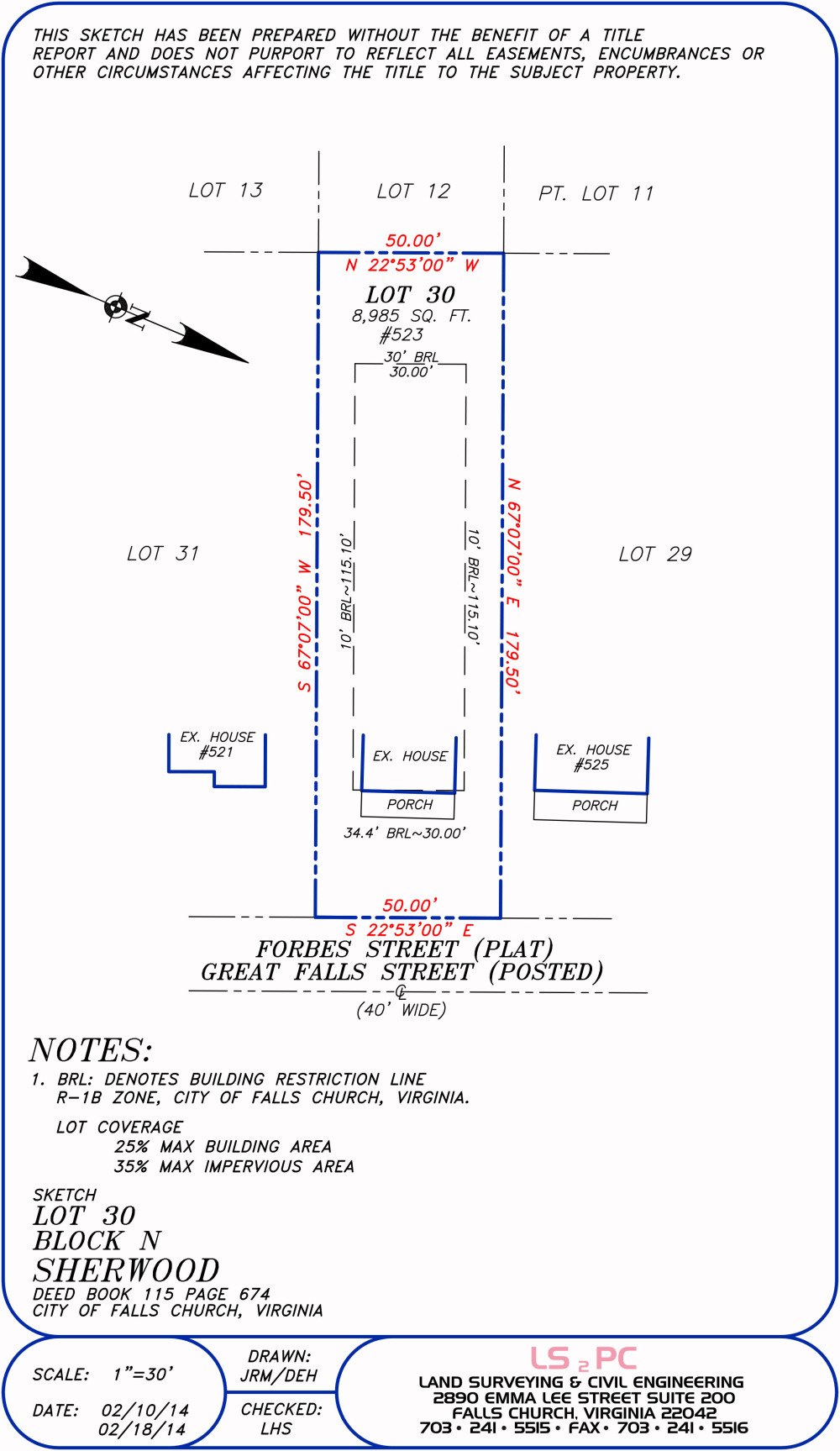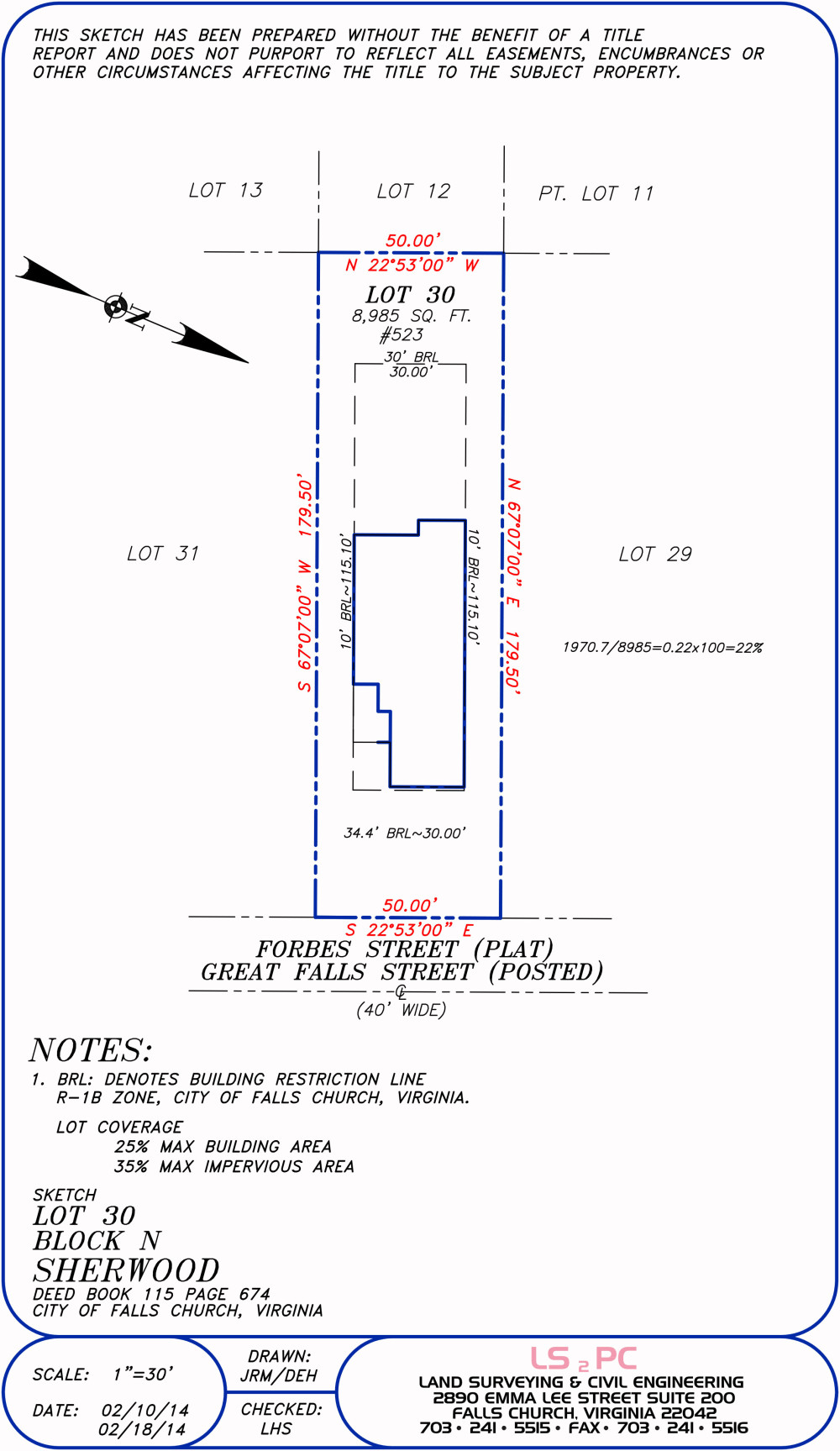Building a Custom Home Series, Part III: The Study Period

The lot contract is ratified! Now what?
Once the contract is ratified, I always go through the following steps before removing the study period contingency from the contract.
Step 1 – Hire a site engineer to do a little investigating.
What I’m looking for from the engineer is to tell me is if there are any crazy easements or RPA’s (Resource Protection Areas) and confirming the setback requirements. In the case of our lot on Great Falls Street and because it resides in the City of Falls Church, it was also important that the house we wanted to build didn’t exceed the coverage requirement (remember city zoning says the new house can’t exceed 25% coverage of the lot and all other impervious areas can’t exceed 35%). The city also looks at front yard setbacks a little differently. The zoning ordinance gives a minimum setback and the actual setback is determined by averaging the front setbacks of neighboring properties. For our lot, the average setback is 34’ so the house can’t be closer than that (even though zoning says it can be 30’).
Here is the plat we received verifying the front setback requirement:
Once the engineer verified all of these items and after I supplied them with the footprint of the house we were thinking of choosing, they provided me with a plat and verification that none of these factors would hinder our development plans.
This is the plat we received for Great Falls Street:
Depending on the engineer and what work you ask him or her to do in order to satisfy your study period, there may be costs associated with the engineer’s work. The engineer I typically turn to can do quite a bit of this from his office, and he will provide me with a plat at no charge as long as he doesn’t have to do any field work. I also try to save the engineer’s time by waiting until the lot is under contract before I ask him to do any of this research.
Step 2 – Order a title report.
By running a title report, you will be able to determine if there are any private easements on the property and/or any covenants that might prevent you from building the home you would like to build. While I have never uncovered anything in a title report that has prevented me from purchasing a lot, we did have a client who had major site issues on her lot because she didn’t look at the title report. There was a private sewer easement that ran right through her property (specifically right through the location where her new house was to be built) and engineer did not plan accordingly. It was a preventable issue had the title report been reviewed. Instead this client spent months resolving the issue, therefore delaying construction. Please do this. It costs a little money, but it’s worth it and you will have to do it eventually in order to close on the lot so why not do it now? Here is a link to the title report we had pulled for Great Falls Street. As you can see, it is long so having a good settlement attorney who can review it for you makes it easier.
Step 3 – Review your overall budget one more time.
I can’t tell you how sensitive I am to budgets. Budgets are critical to a successful build, and we certainly appreciate them. Based on what you find out during the study period, you can adjust your budget accordingly. If you don’t find any glaring site conditions, we always advise clients to budget around $80,000 for their site development costs (I will be writing future posts on all things site development so stay tuned!). If you are building in Arlington County, it will likely cost a little more because of county requirements (I’d budget an additional $15,000).
The only known unusual condition on the Great Falls Street lot are the retaining walls. They aren’t very tall or extensive, so I threw an additional $5,000 in the site budget to cover them.
Step 4 – Does the lot reside in a subdivision with a Homeowner’s Association (HOA)?
If yes, you will need to find out what requirements they have for new development. There may be restrictions on what size and style home you can build, the exterior finishes and the placement of the home on the lot. We had a client recently who had to revise his grading plan after it was completed and approved by the county because the HOA did not approve the house location.
Once you feel comfortable with the engineer’s findings, the title report, your budget and any HOA restrictions, you can remove the study period contingency from the lot contract.
I always love that moment. It means we’re one step closer to a brand new home!
Dream Big. Build Smart.


